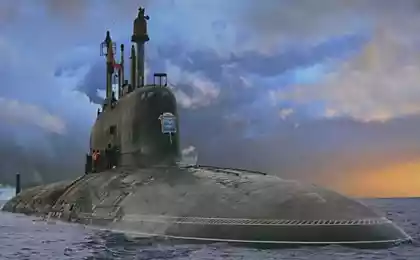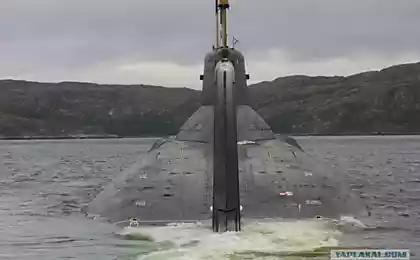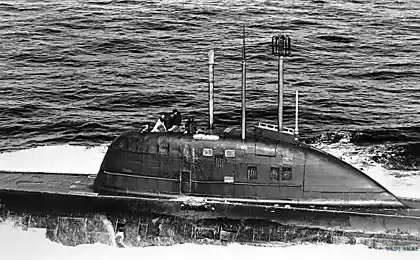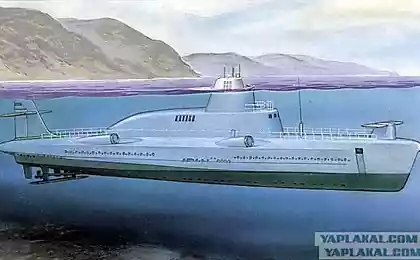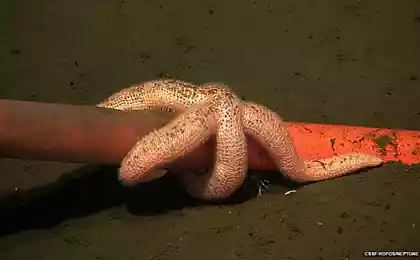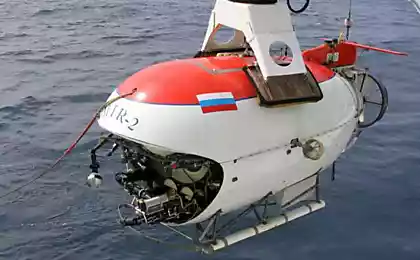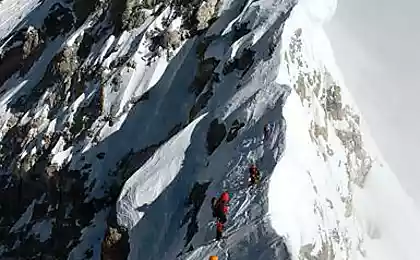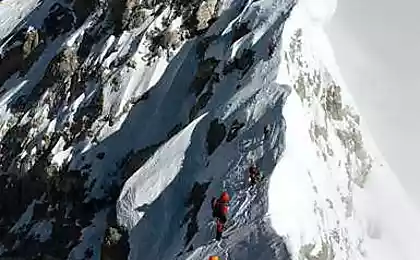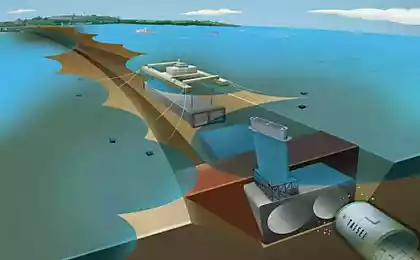1959
The beauty of the underwater world
The post will consist of three parts, each of us will plunge into the underwater world of different places. It will be interesting, let's go ...
A trip to Fiji.
Let's call the first part - smiling shark Fiji. Author talks about so warm meeting with these ferocious fish, talking about their smile, that in another way could not be called a title.
I will not talk about the history of the origin of the island, its climate, etc. who are interested, look in on the wiki. Let's admire the beauty of the underwater world.
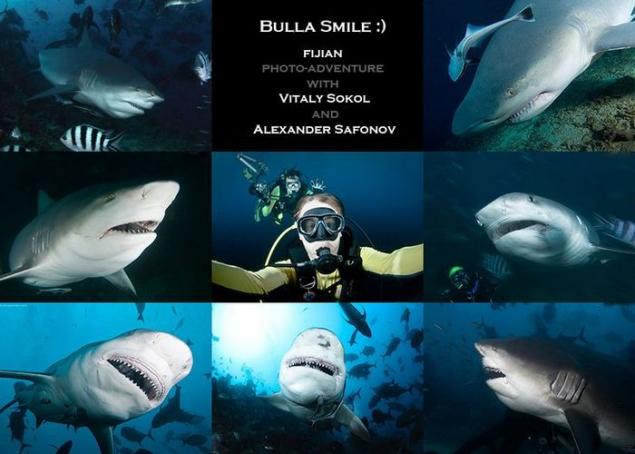
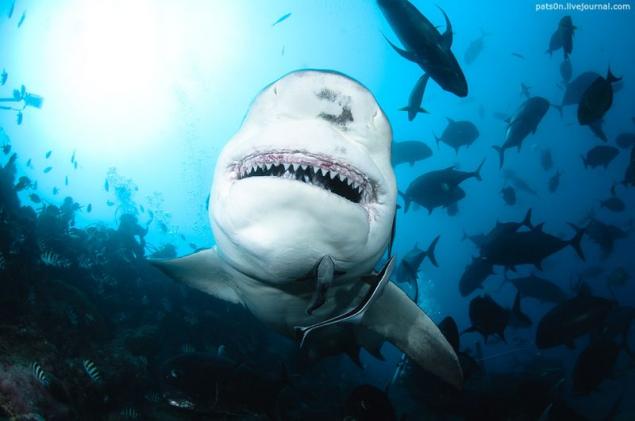
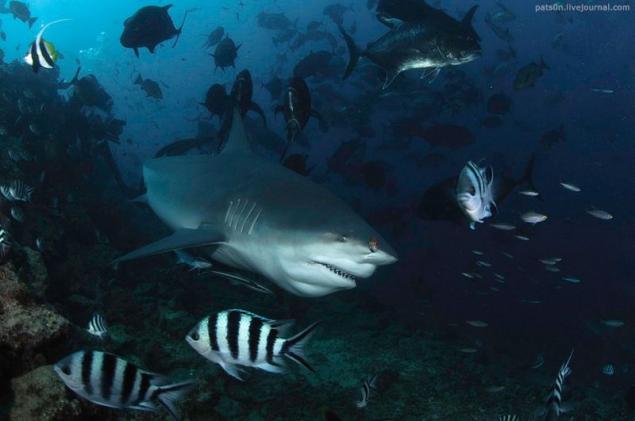

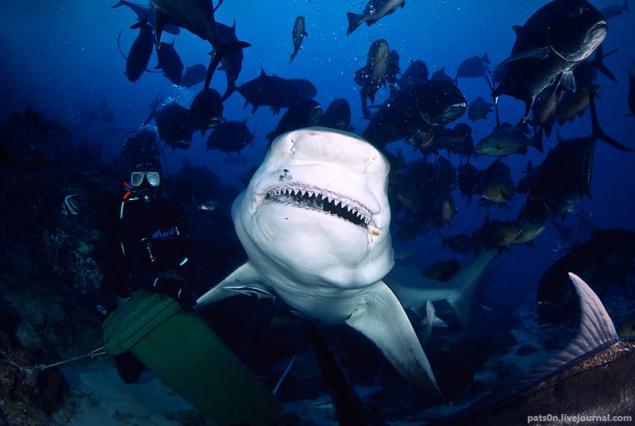
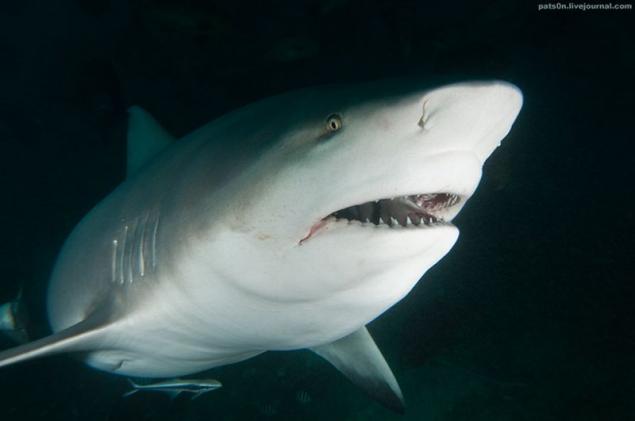
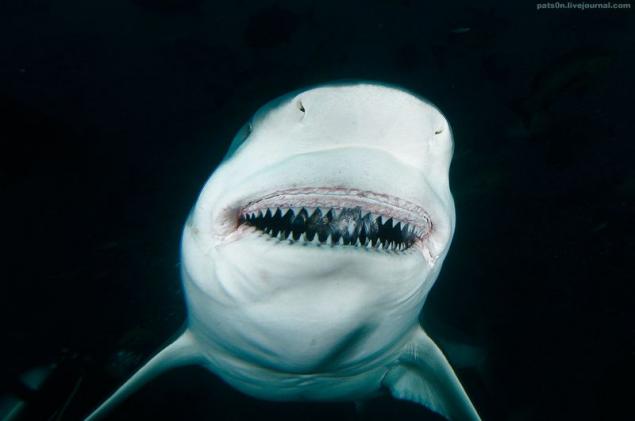

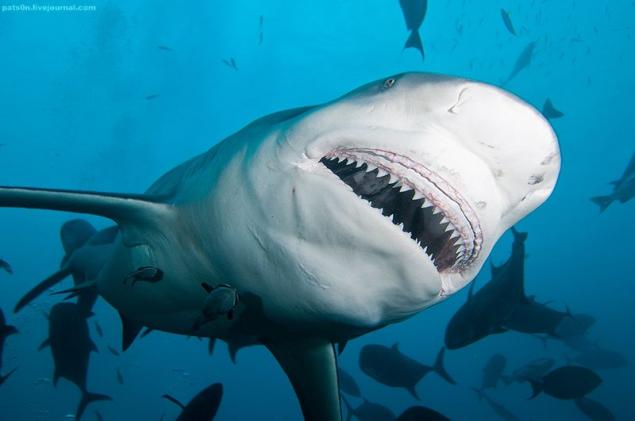

Magic Raja Ampat
The archipelago of Raja Ampat in West Papua - heart "Coral Triangle", the epicenter of coral growth in the world's oceans. It is from these places is happening most of the planet's species of coral, ocean currents disperse their eggs throughout the Pacific Ocean, creating new coral populations in tropical waters with suitable conditions. 75% of the total number of coral species on the planet are taking place here. It is not surprising that the Raja Ampat underwater gardens is perhaps the best vision for my diving career. Their preservation in their original form by the absence of a developed civilization in the surrounding areas - West Papua is still the residence of one of the most traditional cultures, whose activity does not cause much harm to the environment. Raja Ampat tropical waters support the highest species diversity in the oceans - more than 4,000 species of fish and marine animals, including the unique representatives of the macro-world, and the world's largest fish - the whale shark (which meet here, however, is very difficult). To get to the archipelago can be a charter from the port city of Sorong to odny safariynyh yachts accredited in the region - and it takes a lot of time. Diving in the pristine waters of Raja Ampat allows you to see so much - the greatest variety of corals in the world, a myriad of tropical fish, a large population of manta rays, mysterious world of the mangroves. Among the inhabitants of the archipelago of gardens can be seen bearded sharks and several species of pygmy seahorses. We had a chance to witness the saltwater crocodile attacks on one of the divers in our group - however the majority of the fauna in these places quite harmless.
Unfortunately, as in most parts of the Southeast Asian populations of reef predatory sharks in the waters of Raja Ampat mining industry virtually destroyed fins. I would like to hope that the efforts to restrict this barbaric industry will enable the archipelago with time to recover one of the main jewelery of reef fauna.
In this album I have included pictures to illustrate the diversity of species and situation of water in the region to assess the beauty of this strange and fragile world.
Photos taken on the Nikon D300 camera in boxing Sea & Sea, Port Pro One spherical and lenses Nikkor 12-24mm, Nikkor 10.5mm, Sigma 70mm.
Wobbegong shark | Bearded shark
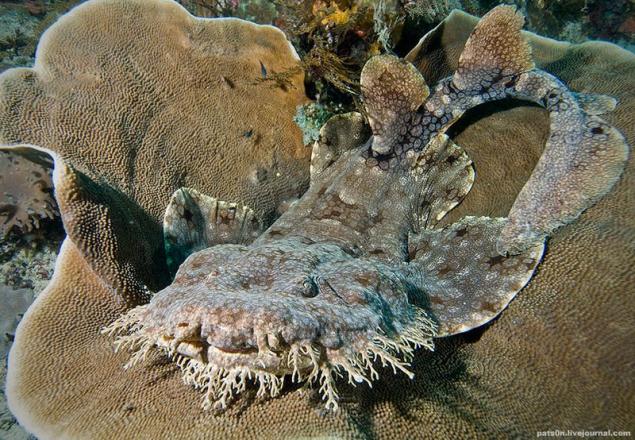
World of life under village jetty | The world lives under the pier
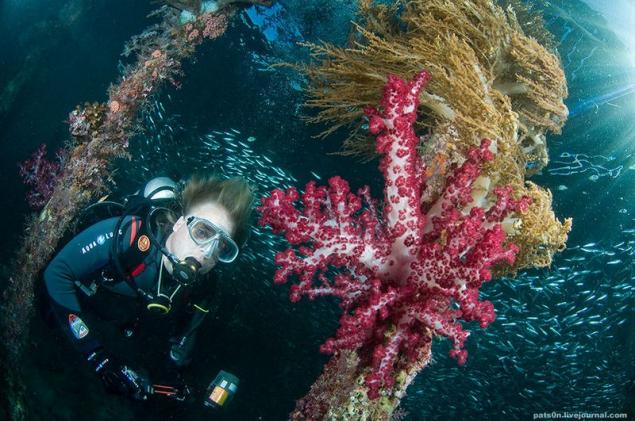
Denise pygmy seahorses | Pygmy seahorse Denis family
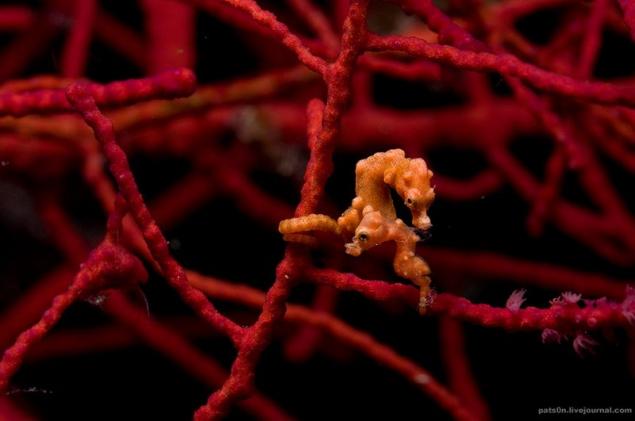
S.M.Y. Ondina, our safari boat | Our yacht safariynyh
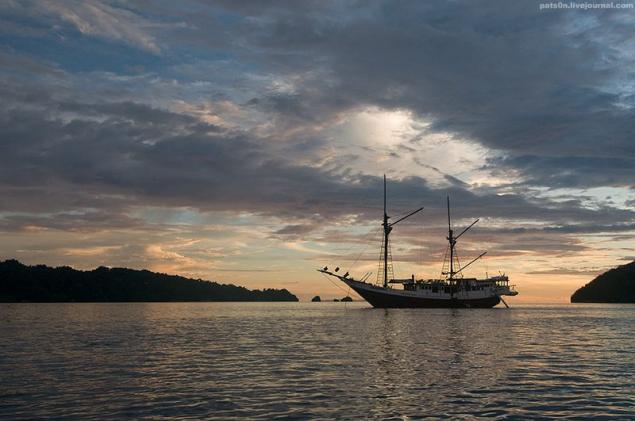
Anemone shrimp | Anemonovaya shrimp

Black manta ray | Black Manta
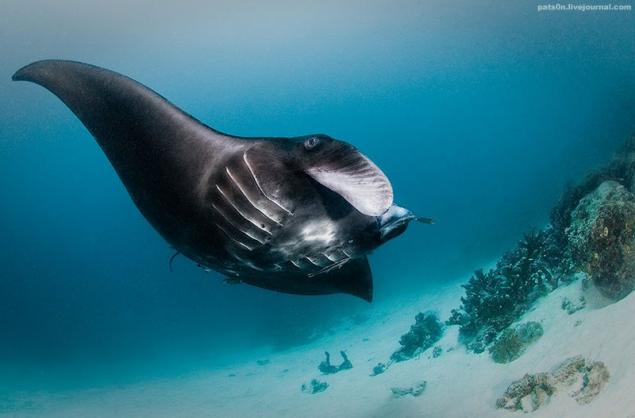
Exploring mangrove shallows | In mangrove shallows

Denise pygmy seahorses | Pygmy seahorse Denis family
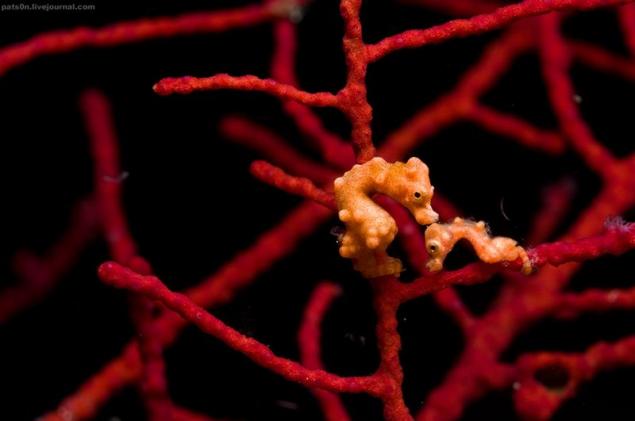
School of painted sweetlips and diver | A flock of painted sweetlips and diver
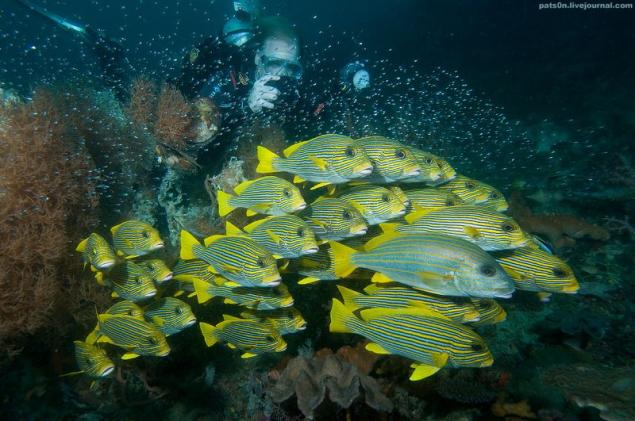
Beach at Airborei island | Island Beach Ayrborey
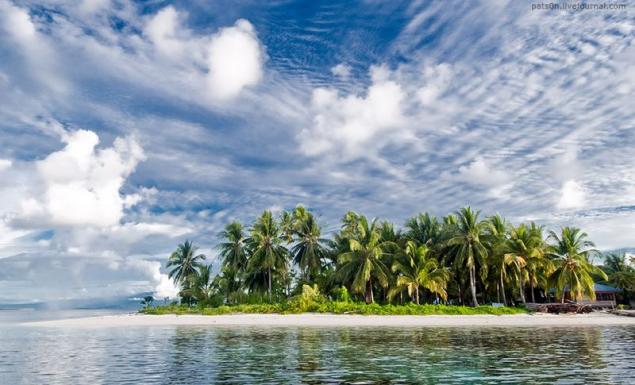
Mantis shrimp | Mantis shrimp

Shy denise pygmy seahorse | Pygmy seahorse Denis family
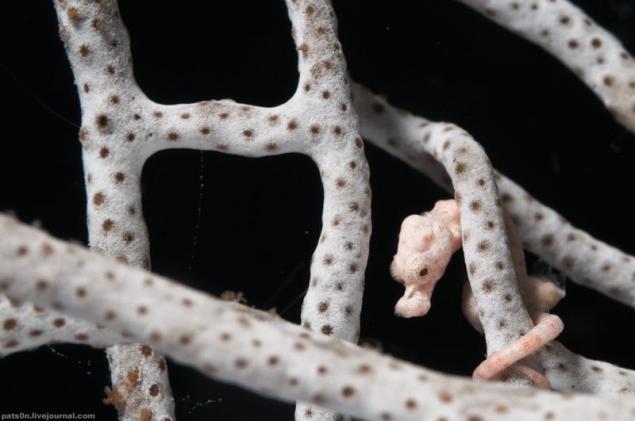
Crocodile fish and the diver | Diver and fish crocodile

World of life under village jetty | The world lives under the pier

Manta ray and «paparazzi» | Manta and "paparazzi»
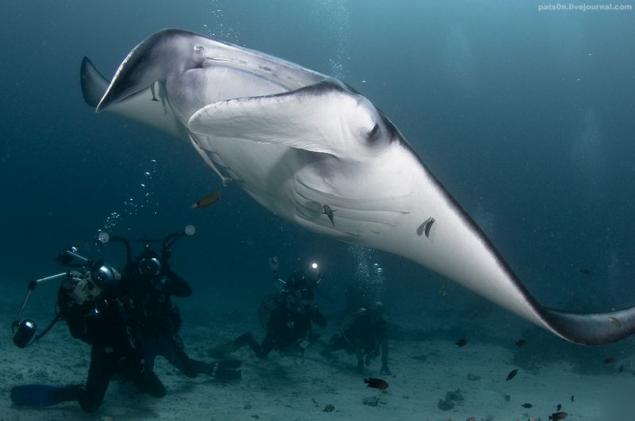
Bubble coral shrimp | Shrimp on coral vesicular
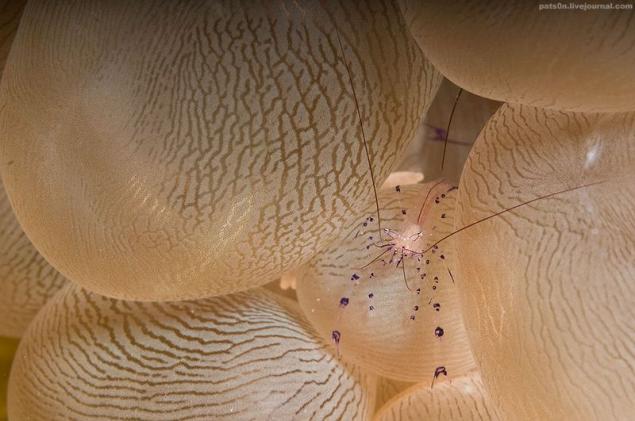
Exloring mangrove shallows | Diver on the mangrove shallows
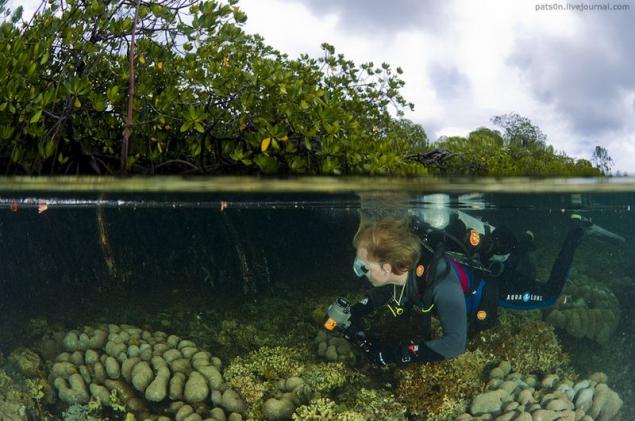
Bargibanti pygmy sea horse | Pygmy Seahorse family Bargibanti
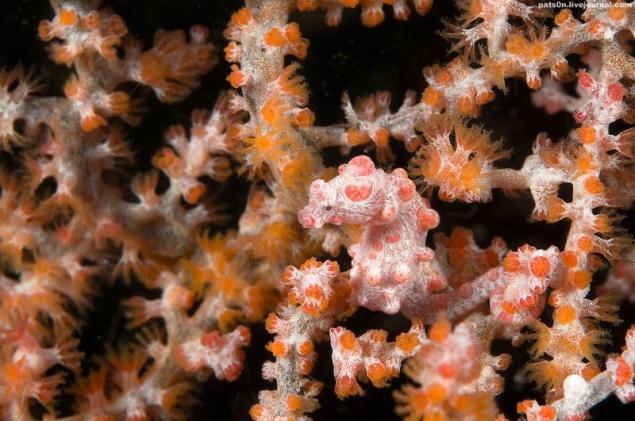
World of life under village jetty | The world lives under the pier
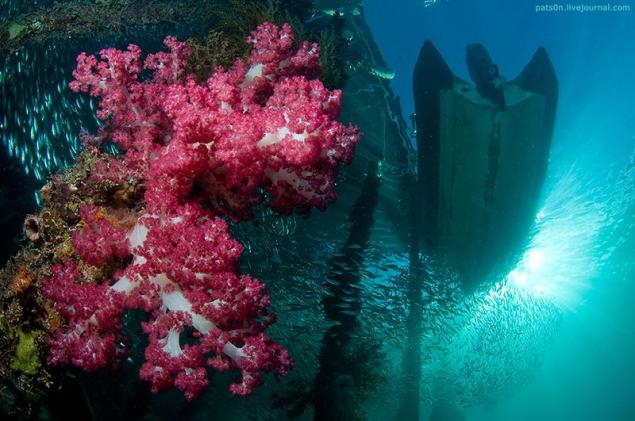
Diver and the sea fan | The diver and gorgonian

Denise pygmy seahorse | Pygmy seahorse Denis family
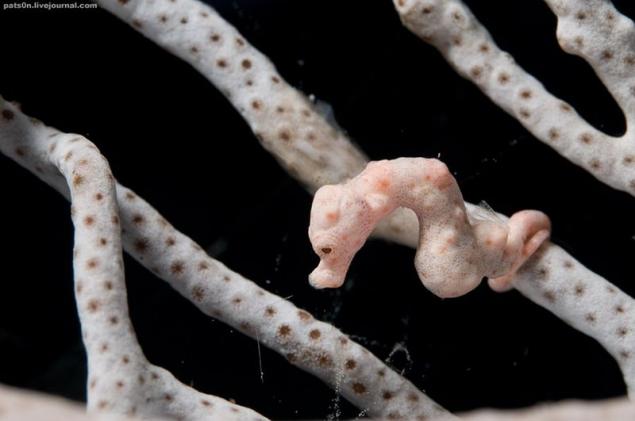
Hard coral on mangrove tree roots | Coral on the roots of the mangrove bushes
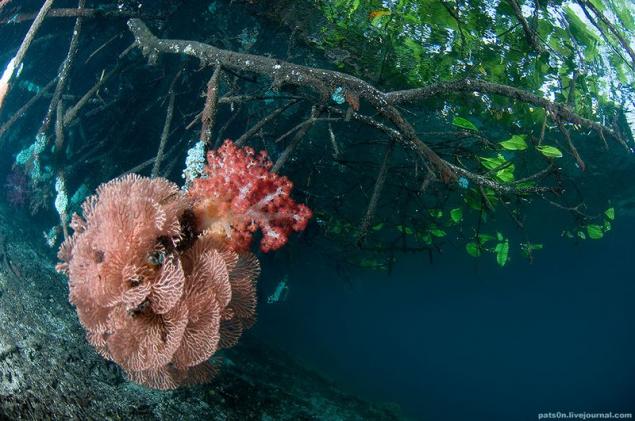
The Sardine Run («Progress Sardine") - a large-scale natural phenomenon, occurring every year in the winter off the east coast of South Africa. Many kilometers a pack of sardines from the Atlantic moves north towards the Indian Ocean - the exact causes of this migration, science is still unknown, which in itself is intriguing. According to some estimates, the number of "biomass" under water at this time exceeds the adjacent land the Great Migration. From the main giant flocks located at a depth of 40-60 meters, the dolphins with Group strategy is separated minor, called Beit-ball (bait balls), and expelled them to the surface, where the dolphins hunt more comfortable individual fish. Sharks, confusing traffic and density of giant clusters of small fish at a depth willingly shared a meal at the surface simultaneously with the sworn enemies-the dolphins. Seabirds usually cover long distances in search of individual fishes, huge flocks flock to such a generous supply of provisions. They connect to the predatory fish such as tuna and marlin. Sometimes the action is crowned by his presence Bryde's whales, whales, able to eat small fish. The result - a collective hunting various kinds of animals, where the behavior of one affects the behavior of others, and this is not only a dynamic large-scale spectacle, but a tangle of unsolved mysteries in science. Taking this natural phenomenon far from easy, and expeditions often very unproductive for photographers. Capricious weather, stormy sea, strong currents usual for this season, limited visibility - all of these factors is able to reduce all efforts to nothing, even if able to detect underwater activity. In addition, the leading wide-angle shot at arm's length, or even inside Beit Ball photographer has to frequently cope with the increased interest in sharks, remember the rain of birds falling from above at speeds exceeding 60 km / h speed attacks dolphins, speeding 30 cm from the back of the head. This year I was able to spend in the pursuit of this phenomenon 14 days in the open sea off the coast of South Africa and, despite the rain and strong in 25 years floods in the region, which caused problems with the visibility associated with the removal of the dirt by rivers into the ocean, was able to make some good dive and capture unique shots hunting predators in Beit Ball.
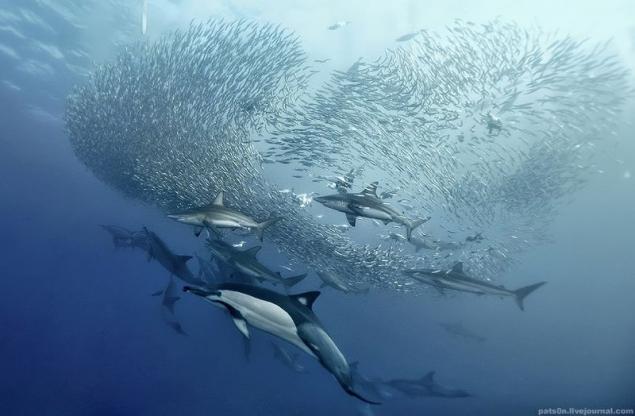
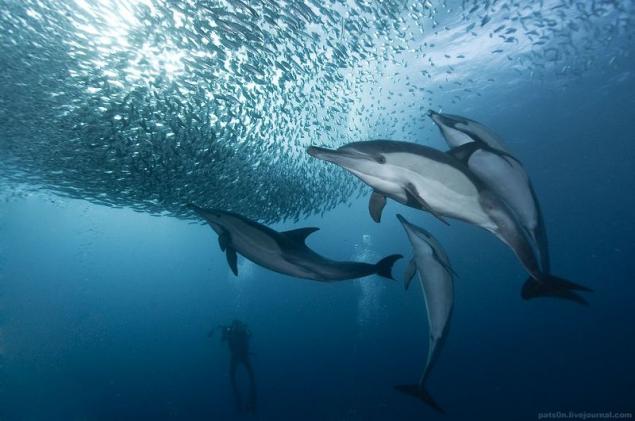

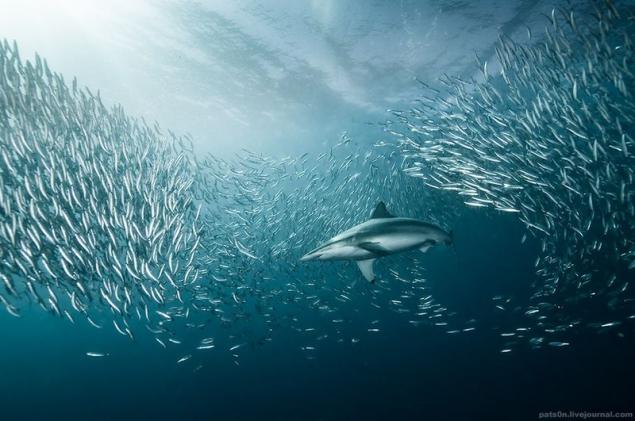

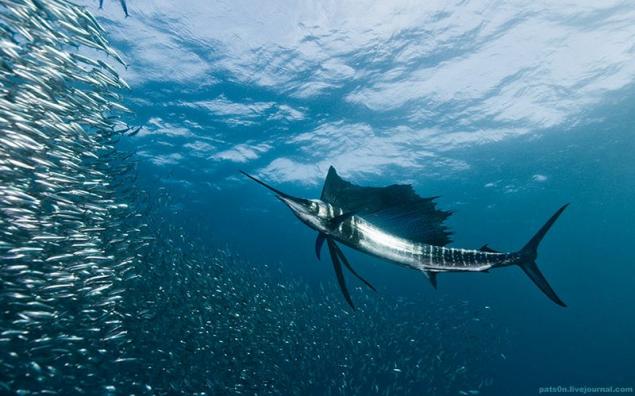
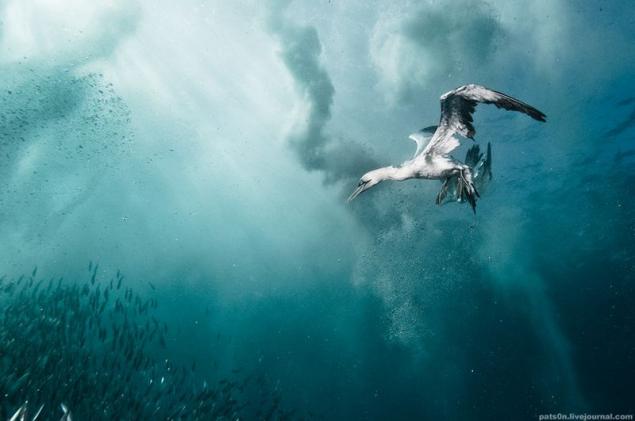

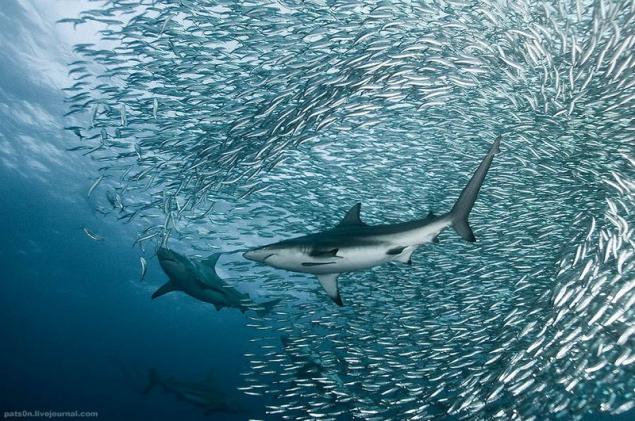
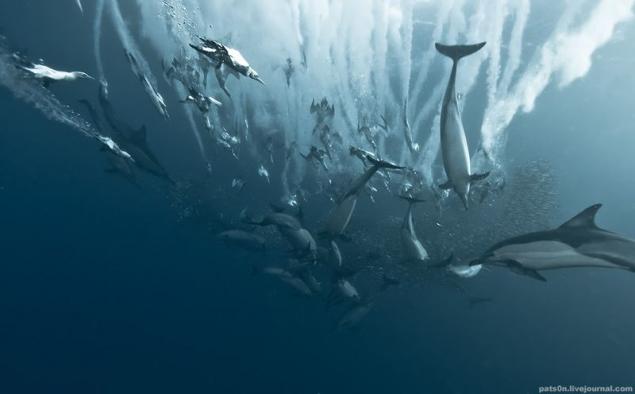

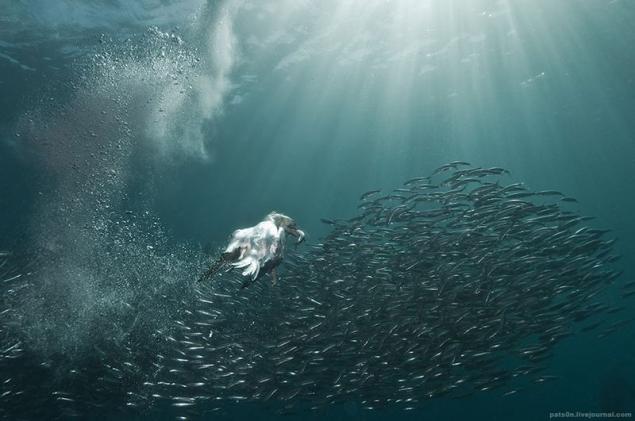
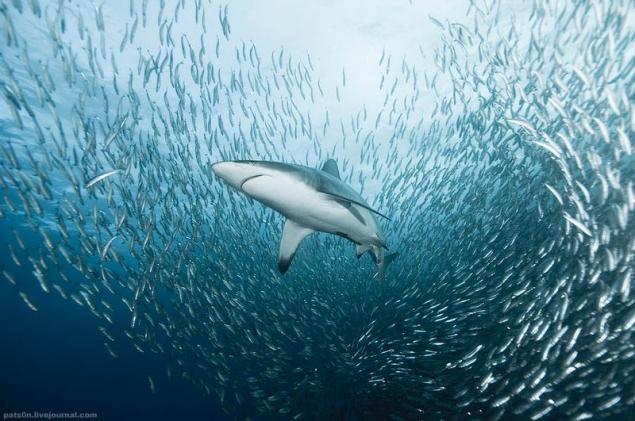
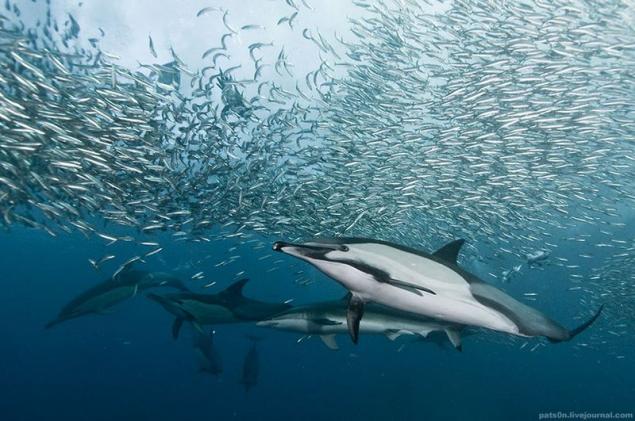
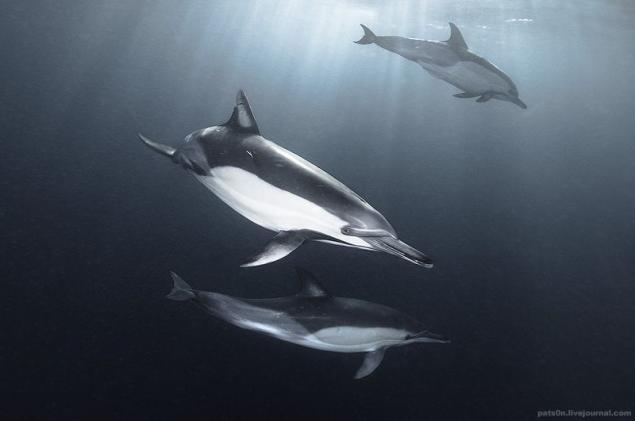

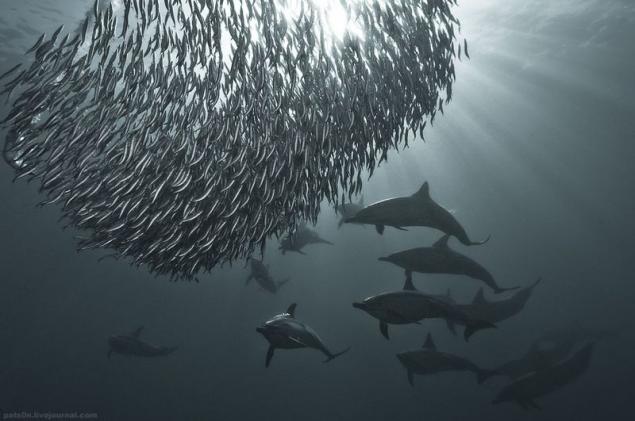
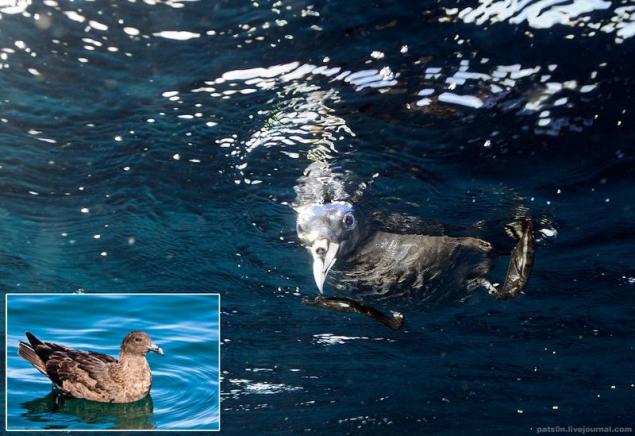
pats0n.livejournal.com Part 1.
pats0n.livejournal.com Part 2.
pats0n.livejournal.com Part 3.
A trip to Fiji.
Let's call the first part - smiling shark Fiji. Author talks about so warm meeting with these ferocious fish, talking about their smile, that in another way could not be called a title.
I will not talk about the history of the origin of the island, its climate, etc. who are interested, look in on the wiki. Let's admire the beauty of the underwater world.










Magic Raja Ampat
The archipelago of Raja Ampat in West Papua - heart "Coral Triangle", the epicenter of coral growth in the world's oceans. It is from these places is happening most of the planet's species of coral, ocean currents disperse their eggs throughout the Pacific Ocean, creating new coral populations in tropical waters with suitable conditions. 75% of the total number of coral species on the planet are taking place here. It is not surprising that the Raja Ampat underwater gardens is perhaps the best vision for my diving career. Their preservation in their original form by the absence of a developed civilization in the surrounding areas - West Papua is still the residence of one of the most traditional cultures, whose activity does not cause much harm to the environment. Raja Ampat tropical waters support the highest species diversity in the oceans - more than 4,000 species of fish and marine animals, including the unique representatives of the macro-world, and the world's largest fish - the whale shark (which meet here, however, is very difficult). To get to the archipelago can be a charter from the port city of Sorong to odny safariynyh yachts accredited in the region - and it takes a lot of time. Diving in the pristine waters of Raja Ampat allows you to see so much - the greatest variety of corals in the world, a myriad of tropical fish, a large population of manta rays, mysterious world of the mangroves. Among the inhabitants of the archipelago of gardens can be seen bearded sharks and several species of pygmy seahorses. We had a chance to witness the saltwater crocodile attacks on one of the divers in our group - however the majority of the fauna in these places quite harmless.
Unfortunately, as in most parts of the Southeast Asian populations of reef predatory sharks in the waters of Raja Ampat mining industry virtually destroyed fins. I would like to hope that the efforts to restrict this barbaric industry will enable the archipelago with time to recover one of the main jewelery of reef fauna.
In this album I have included pictures to illustrate the diversity of species and situation of water in the region to assess the beauty of this strange and fragile world.
Photos taken on the Nikon D300 camera in boxing Sea & Sea, Port Pro One spherical and lenses Nikkor 12-24mm, Nikkor 10.5mm, Sigma 70mm.
Wobbegong shark | Bearded shark

World of life under village jetty | The world lives under the pier

Denise pygmy seahorses | Pygmy seahorse Denis family

S.M.Y. Ondina, our safari boat | Our yacht safariynyh

Anemone shrimp | Anemonovaya shrimp

Black manta ray | Black Manta

Exploring mangrove shallows | In mangrove shallows

Denise pygmy seahorses | Pygmy seahorse Denis family

School of painted sweetlips and diver | A flock of painted sweetlips and diver

Beach at Airborei island | Island Beach Ayrborey

Mantis shrimp | Mantis shrimp

Shy denise pygmy seahorse | Pygmy seahorse Denis family

Crocodile fish and the diver | Diver and fish crocodile

World of life under village jetty | The world lives under the pier

Manta ray and «paparazzi» | Manta and "paparazzi»

Bubble coral shrimp | Shrimp on coral vesicular

Exloring mangrove shallows | Diver on the mangrove shallows

Bargibanti pygmy sea horse | Pygmy Seahorse family Bargibanti

World of life under village jetty | The world lives under the pier

Diver and the sea fan | The diver and gorgonian

Denise pygmy seahorse | Pygmy seahorse Denis family

Hard coral on mangrove tree roots | Coral on the roots of the mangrove bushes

The Sardine Run («Progress Sardine") - a large-scale natural phenomenon, occurring every year in the winter off the east coast of South Africa. Many kilometers a pack of sardines from the Atlantic moves north towards the Indian Ocean - the exact causes of this migration, science is still unknown, which in itself is intriguing. According to some estimates, the number of "biomass" under water at this time exceeds the adjacent land the Great Migration. From the main giant flocks located at a depth of 40-60 meters, the dolphins with Group strategy is separated minor, called Beit-ball (bait balls), and expelled them to the surface, where the dolphins hunt more comfortable individual fish. Sharks, confusing traffic and density of giant clusters of small fish at a depth willingly shared a meal at the surface simultaneously with the sworn enemies-the dolphins. Seabirds usually cover long distances in search of individual fishes, huge flocks flock to such a generous supply of provisions. They connect to the predatory fish such as tuna and marlin. Sometimes the action is crowned by his presence Bryde's whales, whales, able to eat small fish. The result - a collective hunting various kinds of animals, where the behavior of one affects the behavior of others, and this is not only a dynamic large-scale spectacle, but a tangle of unsolved mysteries in science. Taking this natural phenomenon far from easy, and expeditions often very unproductive for photographers. Capricious weather, stormy sea, strong currents usual for this season, limited visibility - all of these factors is able to reduce all efforts to nothing, even if able to detect underwater activity. In addition, the leading wide-angle shot at arm's length, or even inside Beit Ball photographer has to frequently cope with the increased interest in sharks, remember the rain of birds falling from above at speeds exceeding 60 km / h speed attacks dolphins, speeding 30 cm from the back of the head. This year I was able to spend in the pursuit of this phenomenon 14 days in the open sea off the coast of South Africa and, despite the rain and strong in 25 years floods in the region, which caused problems with the visibility associated with the removal of the dirt by rivers into the ocean, was able to make some good dive and capture unique shots hunting predators in Beit Ball.


















pats0n.livejournal.com Part 1.
pats0n.livejournal.com Part 2.
pats0n.livejournal.com Part 3.
